Upper Sacramento River, Shasta County
2016 Update
Species / Location
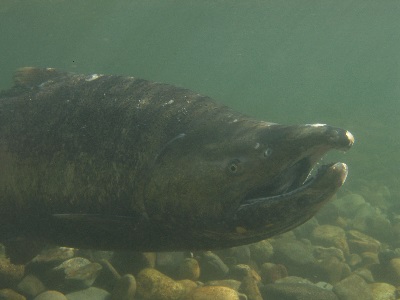 Figure 1. Male winter-run Chinook Salmon. (CDFW photo A. Jensen)
Figure 1. Male winter-run Chinook Salmon. (CDFW photo A. Jensen)
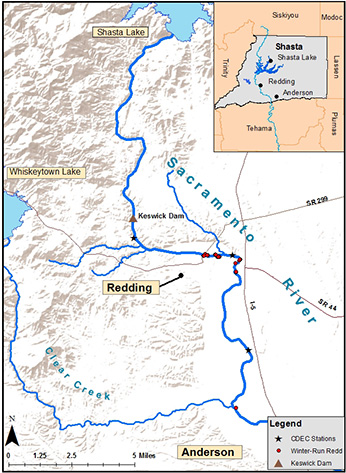 Figure 2. Map of locations of monitored winter-run redds on the Upper Sacramento River, Shasta County.(click/tap to enlarge)
Figure 2. Map of locations of monitored winter-run redds on the Upper Sacramento River, Shasta County.(click/tap to enlarge)
The Sacramento River is home to four distinct runs (fall, late fall, spring, and winter) of Chinook Salmon (Oncorhynchus tshawytscha) (Figure 1). Winter-run Chinook Salmon (winter-run) are particularly unique compared to other salmon species found on the West Coast in that they spawn during the warm summer months. While spawning during the summer may not seem like an advantageous life history strategy, historically, winter-run spawned in upstream tributaries fed by cold water springs which would stay cool all summer long. Construction of the Shasta and Keswick Dams blocked winter-run from these historic spawning grounds. This left the uppermost reaches of the Sacramento River in Redding as the only locations with suitable spawning habitat and cold water temperatures needed for successful incubation (Figure 2).
Need for Drought Stressor Monitoring
California’s severe drought has further exacerbated the competing demands for limited water resources stored in Shasta Reservoir. The United States Bureau of Reclamation releases higher volumes of water in late spring and early summer due to water delivery needs during that time. This results in uncharacteristically high flows from May to August. Following peak demand, releases are usually reduced starting in September. Winter-run build nests called redds and spawn on underwater gravel bars from April to August. Starting in September, water releases and reductions start to fluctuate and can cause redds to be at risk of being dewatered, or exposed out of the water. Salmon eggs incubate in the gravel for approximately three months, although this timeframe varies based on water temperature, and late spawned eggs will need suitable flow through November for young to successfully emerge out of the redd.
Stressor Monitoring Efforts
Salmon eggs need specific ranges of water velocities, dissolved oxygen levels, and optimal water temperatures for embryo survival. The observed ideal velocity requirements for Chinook Salmon redds are 30-80 cm/sec (1-2.6 ft/sec) while optimal temperatures range from 5- 13°C (41-55°F) (Moyle, 2002). With this in mind, California Department of Fish and Wildlife (CDFW) and Pacific State Marine Fisheries Commission staff surveyed the redds by recording a location for each redd with a Trimble Geo7x handheld GPS unit. In addition, they documented depth, date, time, and if salmon activity was present and took a digital photograph of each redd (Figures 3 and 4). With these data, staff predicted the date when young would emerge and what flow release levels would pose dewatering risks to each redd. All redds were re-measured with every reduction of flow from Keswick Dam.
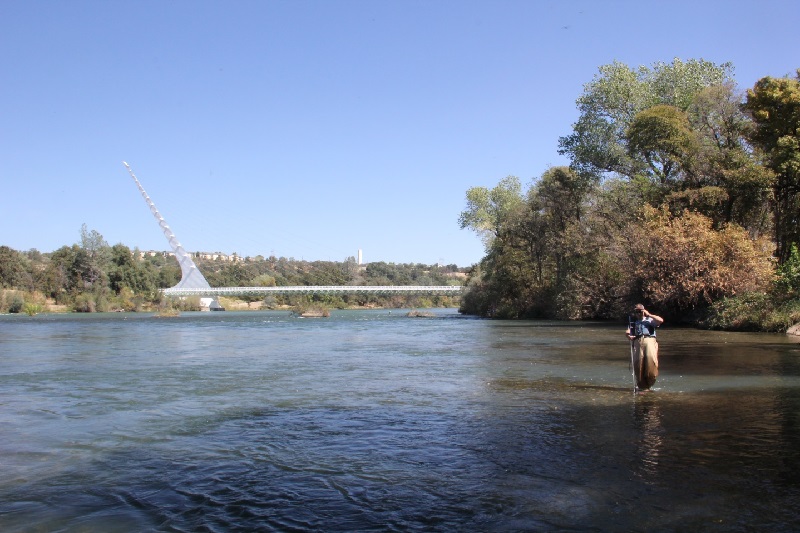 Figure 3. Pacific State Marine Fisheries Commission biologist Mike Memeo measures flow over a shallow winter-run redd in the Upper Sacramento River on October 21, 2016. (CDFW photo S. Alexander)
Figure 3. Pacific State Marine Fisheries Commission biologist Mike Memeo measures flow over a shallow winter-run redd in the Upper Sacramento River on October 21, 2016. (CDFW photo S. Alexander)
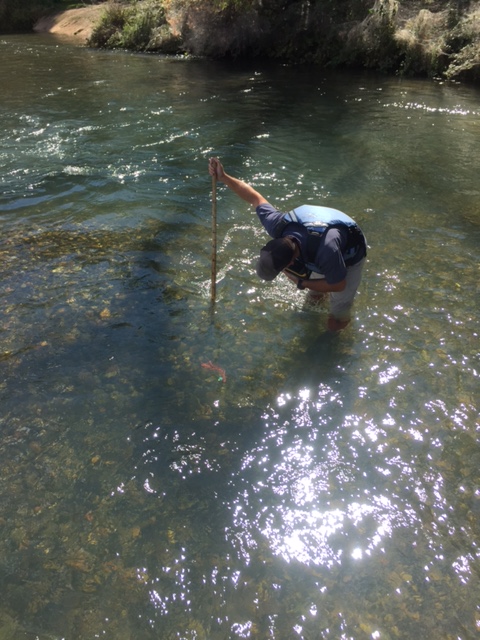 Figure 4. Pacific State Marine Fisheries Commission biologist Zach Sigler measures depth of a shallow winter-run redd on August 29, 2016 in the Upper Sacramento River. (CDFW photo S. Alexander)
Figure 4. Pacific State Marine Fisheries Commission biologist Zach Sigler measures depth of a shallow winter-run redd on August 29, 2016 in the Upper Sacramento River. (CDFW photo S. Alexander)
Findings
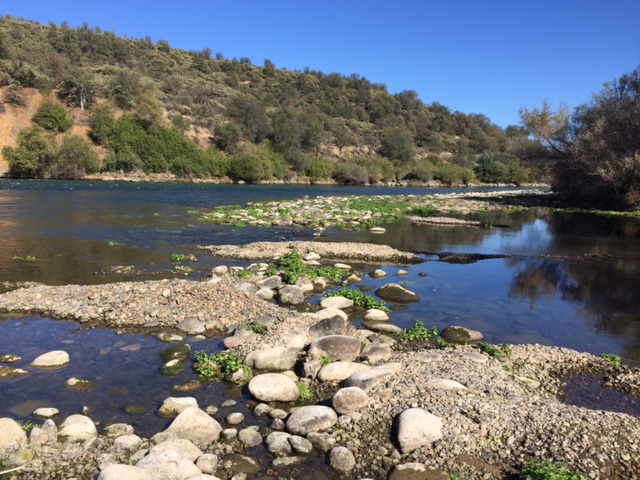 Figure 5. Dewatered, expired redds in the Upper Sacramento River. The work of CDFW prevented any of the monitored redds from becoming dewatered prior to young winter-run emerging from the redd. (CDFW photo S. Alexander)
Figure 5. Dewatered, expired redds in the Upper Sacramento River. The work of CDFW prevented any of the monitored redds from becoming dewatered prior to young winter-run emerging from the redd. (CDFW photo S. Alexander)
From April 4 through November 5, 2016, a total of 28 redds were identified as being at risk of dewatering and were closely monitored following every Keswick release reduction (Figure 5). Each flow reduction was done in increments of 250 cubic feet per second to prevent any unexpected dewatering. If any redds became too close to being dewatered, future flow reductions would be postponed until eggs had hatched from that redd. Due to CDFW and the Pacific State Marine Fisheries Commission’s close monitoring of these redds and excellent communication with the United States Bureau of Reclamation to ensure that flows were high enough, no winter-run redds became dewatered.
Future Efforts
CDFW sees the biological need to continue monitoring winter-run redds to ensure the protection of this unique and endangered salmon run. Continued monitoring and collaboration will allow CDFW to effectively manage winter-run populations.
References
- Moyle, P.B 2002. Salmon and Trout, Salmonidae – Chinook Salmon, (Oncorhynchus tshawytscha) in Inland Fishes of California. Los Angeles, California: University of California press, 251-259.
CDFW
Pacific States Marine Fisheries Commission